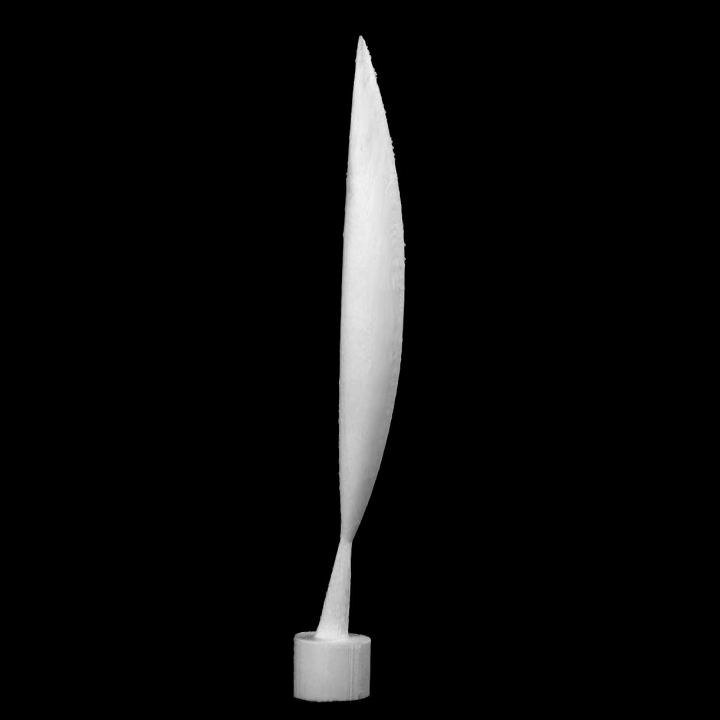
Bird in Space at The MoMA, New York
myminifactory
From 1920s until 1940s, Brancusi obsessively focused on the theme of a bird in flight. He concentrated on capturing the animals' movements, rather than their physical attributes. In Bird in Space, the sculptor deliberately eliminated wings and feathers, stretched the body's swell, and reduced the head and beak to an angular oval plane. Balanced on a slender conical pedestal, the figure's upward thrust appears unencumbered. This sculpture is part of a series that includes seven marble sculptures and nine bronze casts. It was sold in 2005 for $27.5 million, at the time a record-breaking price for a sculpture sold at auction. Seven of the sculptures in the series are crafted from marble, while the other nine were cast in bronze. The first and most renowned of the series is housed in the Metropolitan Museum of Art in New York City, while two bronze casts (1928 and c.1941) reside in that city's Museum of Modern Art. Two versions of the sculpture, one bronze (1924) and one marble (1923–1924), are displayed at the Philadelphia Museum of Art. A 1926 bronze is on display at the Seattle Art Museum. Two more bronze casts (1925–1926 and 1927) are displayed at the Los Angeles County Museum of Art, and a 1931 bronze cast is housed at the Norton Simon Museum of Art in Pasadena, California. Another bronze of unknown casting date resides in the Peggy Guggenheim Collection in Venice, Italy, and the National Gallery of Australia in Canberra owns two marbles, both c.1931-1936, one white and one black. In 1926-27, Bird in Space was involved in a court battle over its taxation by U.S. Customs. In October 1926, Bird in Space, along with 19 other Brâncuși sculptures, arrived in New York harbor aboard the steamship Paris. While works of art are exempt from custom duties, the customs officials refused to believe that the tall, thin piece of polished bronze was art and so imposed a tariff for manufactured metal objects, 40% of the sale price or about $230 (over $2800 in 2010 U.S. dollars). Marcel Duchamp (who accompanied the sculptures from Europe), American photographer Edward Steichen (who was to take possession of Bird in Space after exhibition), and Brâncuși himself were outraged; the sculptures were set to appear at the Armory Show. Despite the varied opinions on what qualifies as art presented to the court, in November 1928 Judges Young and Waite ruled in favor of the artist. The decision drafted by Waite concluded: "The object now under consideration... is beautiful and symmetrical in outline, and while some difficulty might be encountered in associating it with a bird, it is nevertheless pleasing to look at and highly ornamental, and as we hold under the evidence that it is the original production of a professional sculptor and is in fact a piece of sculpture and a work of art according to the authorities above referred to, we sustain the protest and find that it is entitled to free entry." This was the first court decision that accepted non-representational sculpture as art. This object is part of "Scan The World". Scan the World is a non-profit initiative introduced by MyMiniFactory, through which we are creating a digital archive of fully 3D printable sculptures, artworks and landmarks from across the globe for the public to access for free. Scan the World is an open-source community effort; if you have interesting items around you and would like to contribute, email stw@myminifactory.com to find out how you can help.
With this file you will be able to print Bird in Space at The MoMA, New York with your 3D printer. Click on the button and save the file on your computer to work, edit or customize your design. You can also find more 3D designs for printers on Bird in Space at The MoMA, New York.
